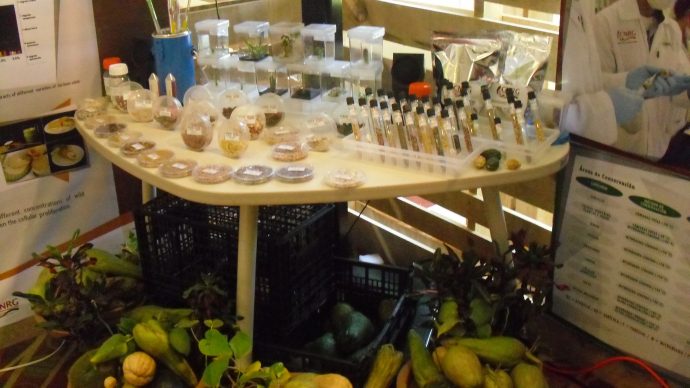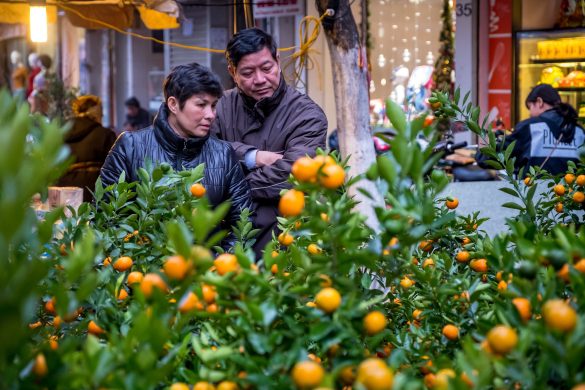Ris, majs og hvede. Oksekød, svinekød og kylling.
Herfra stammer langt hovedparten af vores kost.
Det er et problem for den naturlige mangfoldighed (biodiversitet), påpeger José Graziano da Silva, generaldirektøren for FN’s Fødevare- og Landbrugsorganisation (FAO).
“Only three staple crops — rice, maize and wheat — and three animal species — cattle, pigs and chicken — provide the majority of food energy intake in the world”, siger FN-spidsen.
Det foregik ved indledeningen til en international dialog om at udbrede hensynet til biodiversit i landbrugssektoren.
Undersøgelser viser, at naturen og biodiversiteten er på tilbagegang på hele kloden.
Det sker på trods af, at den naturlige mangfoldighed er essentiel for både landbrug og vores fødevareforsyning.
“Biodiversity is essential for safeguarding global food security and nutrition, improving rural livelihoods, and enhancing the resilience of people and communities,” forklarede José Graziano da Silva.
Mainstreaming
Ved det seneste FN-topmøde om biodiversitet i december 2016 underskrev over 100 ministre fra hele kloden en erklæring om at inddrage hensyn til den naturlige mangfoldighed i fire sektorer, herunder landbruget.
Mainstreaming, kaldes det, eller sektorintegration på dansk.
Fødevareproduktion gør et stort indhug i den naturlige mangfoldighed på kloden, påpeger generaldirektøren.
“The way we are producing our food is a big part of the problem”, understreger han.
“Today, the world still produces food mainly based on the principles of the Green Revolution that started more than 50 years ago, and implies the use of high chemical inputs at a high cost for the environment,” supplerer han.
Generaldirektøren påpegede, at der skal en omstilling til for at landbruget kan foregå i harmoni med naturen og biodiversiteten.
Den internationale dialog foregår fra d. 29. til 31. maj med deltagelse af eksperter, ministre og vigtige aktører. Det er en del af FAOs Biodiversity Mainstreaming Platform.
Resultaterne af forummet vil blive dokumenteret i en rapport. Mainstreaming af biodiversitet vil blive del af diskussionerne ved det næste FN-topmøde om biodiversitet (COP14) i Sharm El Sheikh i efteråret.
Tal og data
– In 2014, just 200 plants were farmed, with only nine of them (sugar cane, maize, rice, wheat, potatoes, soybeans, oil palm fruit, sugar beet and cassava) accounting for over 66 percent of all crop production. (Dialogue Brochure, page 6 “Crops section)
– 8 crop species (barley, beans, groundnut, maize, potatoes, rice, sorghum and wheat) provide 53 percent of average daily calories consumed
– 3 crop species (wheat, rice and maize) represent 48 percent of average daily calories consumed.
– Of 8,800 known livestock breeds, 7 percent are extinct, 24 percent are at risk of extinction and 59 percent are classified as being of unknown risk status because of lack of data.
– 5 animal species (cattle, sheep, goats, pigs and chickens) provide 31 percent of average daily protein consumed,
– About 3.6 million crop accessions (collections of plant material from a particular location) are conserved in gene banks by 71 countries and 12 international centres, with about half the total holdings belonging to nine major food crops.
– Although crop wild relatives represent about 13 percent of the world’s gene bank holdings, about 70 percent of such species are still missing.
– Protected areas and botanical gardens have expanded by 30 percent and increased the conservation of crop wild relatives.
– Only ten species provide about 30 percent of marine capture fisheries (Brochure)
– Globally, 524 million hectares of forests have been primarily designated for biodiversity conservation.
– Mountain areas host 25 percent of terrestrial biodiversity, including the gene pool of globally important crops such as maize, potatoes, barley, sorghum, tomatoes and apples.
– Grasslands contain 11 percent of the world’s endemic bird areas and about 750 genera and 12 000 species of grass, and contribute to the maintenance of pollinators and other insects that have important regulating functions.
– 1 074, or 12 percent, of the world’s recorded livestock breeds are considered to be adapted to drylands.
– Pollinators are responsible for 35 percent of global crop production and play a fundamental role in food production
(Kilde: FAO)















